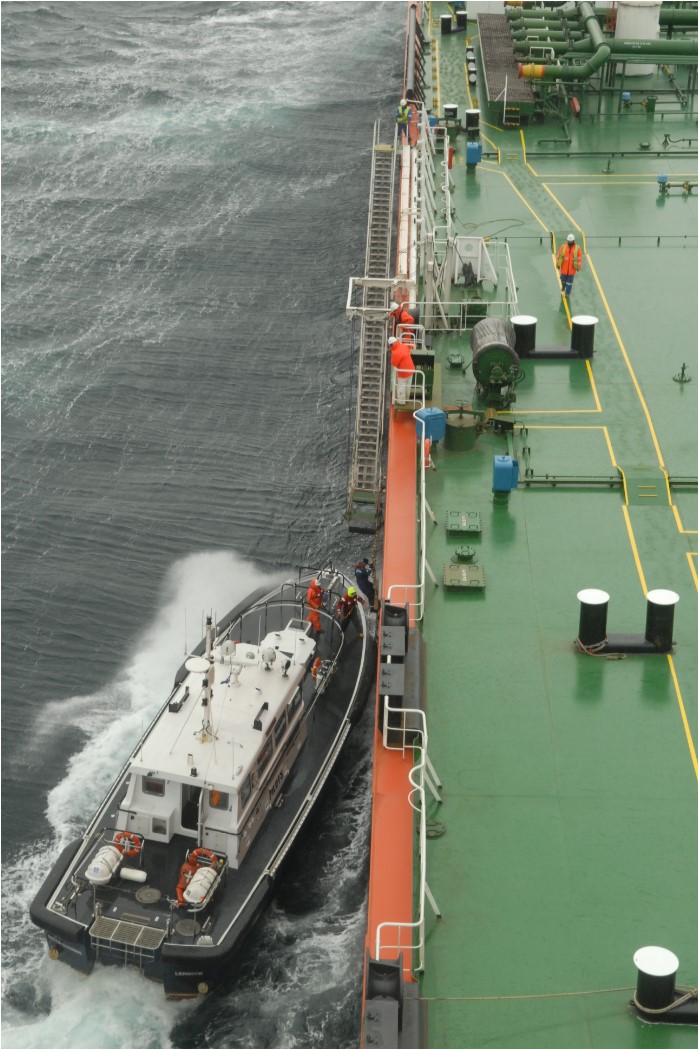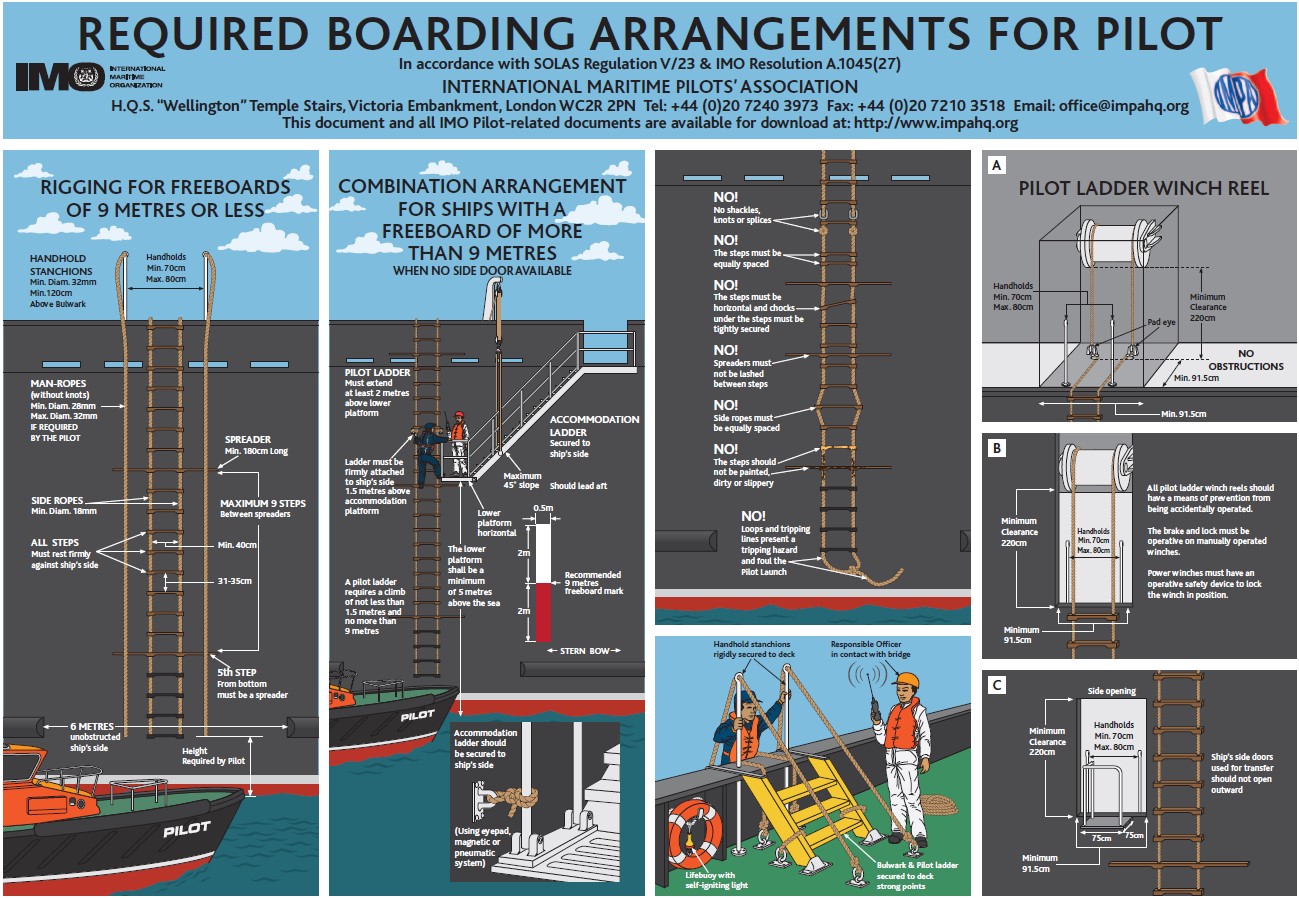Sullom Voe

The Pilotage Direction is made pursuant to Section 7 of the Pilotage Act 1987 (hereinafter referred to as ‘the Act’).
The Council directs that Pilotage shall be compulsory for all ships navigating within the Sullom Voe Harbour Area except those specified in Section 7[3] of the Act and detailed below. Authorised pilots are available on a 24 hour basis.
Pilot Boarding
Pilot boarding information including Passage Plans and Pilot Boarding Information can be found here
The transportation of Pilots at Sullom Voe will normally be carried out by the Authority’s pilot vessels.
Ships required to take a pilot onboard shall do so in the following positions:
Ships approaching the north entrance of the harbour area should rendezvous with the pilot in position 60º38.3’N 001º14.8’W with Point of Fethaland lighthouse bearing 260ºT x 1.8M.
Ships approaching the south east entrance of the harbour area should rendezvous with the pilot in position 60º28.5’N 000º56.5’W with Firths Voe lighthouse bearing 260ºT x 7M.
Ships may take a pilot onboard in other areas only if expressly directed to do so by an authorised Pilot or the Harbour Master.
Exemption from compulsory Pilotage
The following vessels shall be exempt from compulsory Pilotage unless otherwise directed by the Harbour Master:
- All ships of not more than 300 tons gross registered tonnage which do not have onboard dangerous substances to which the provisions of the Dangerous Substances in Harbour Areas 1987 regulations apply.
- All fishing vessels and vessels primarily engaged in supply, operations or harvesting of farmed fish/farmed shellfish up to a maximum of 80m LOA unless specifically required to take a Pilot by the Harbour Master.
- All tugboats operating exclusively within the harbour area.
- All ships in transit through the harbour area which do not pass south of a line joining the most northerly point of Gluss Isle and the most northerly point of Calback Ness.
- All ships belonging to His Majesty.
- All ships engaged in hydrographic survey work, pipelaying, trenching, inspection or similar operations.
Pilotage Exemption Certificates
The Secretary of State has directed that the Shetland Islands Council will refuse to grant such certificates in respect of vessels using Sullom Voe Harbour Area.
Pilot Transfer Arrangements
All vessels calling at the Port of Sullom Voe must comply with;
- SOLAS Reg V/23
- IMO Resolution A.1045 (27)
Masters are advised that these regulations will be strictly enforced by Sullom Voe Harbour Authority. Any delays and/or additional costs incurred by a vessel unable to comply with the above regulations will be strictly to the vessel’s own account.
The following points are stressed:
- The rigging of the pilot ladders and the embarkation and disembarkation of Pilots thereby shall be supervised by a responsible deck officer of the ship.
- Every pilot ladder shall be secured in a position clear of any possible discharges from the ship, and so that each step rests firmly against the ship's side.
- Every pilot ladder shall be secured in a position where the Pilot can gain safe and convenient access to the ship after climbing not less than 1.5 metres and not more than nine metres.
- Whenever the distance from the water to the point of access to the ship exceeds nine metres, access to the ship must be by means of a combination of a pilot ladder and an accommodation ladder, or any equally safe and convenient means.
- Owners, Charterers and Masters of vessels should be aware that SOLAS Regulation V/23 & IMO Resolution A.1045(27) specifies very clearly the conditions under which accommodation ladders are permitted to be used in the combination with a pilot ladder when the freeboard exceeds nine metres. Masters are advised that these regulations will be strictly enforced by the Harbour Authority. Any vessels unable to comply with the above section in any particular way should contact their agent in good time before arrival in order to arrange alternative means for embarking the pilot. Any delays and/or additional costs incurred by vessels unable to comply with the above regulations will be strictly to the ship’s own account.
- Adequate lighting shall be provided at night so that the pilot ladder overside, and also the position where the Pilot boards the ship, shall be properly illuminated.
- Actual sea conditions for small craft are not always appreciated when viewed from the bridge of a large vessel. Boarding and landing of pilots is a potentially hazardous operation, which requires whole-hearted co-operation between those in control of both the tanker and pilot boat. Hard and fast rules cannot be laid down to fit every set of circumstances but the following points of guidance should be noted:
- All vessels being serviced should be at the pilot station at the agreed time and not significantly early or late.
- All vessels being serviced should be ready to respond to all reasonable requests from the pilot boat to ensure a safe transfer. Agreement as to how and where the transfer is to take place should be reached in ample time and the manoeuvre executed where sufficient sea room exists.
- All vessels being serviced should inform the pilot boat of their intention to change their heading and when that change of heading has been completed.

